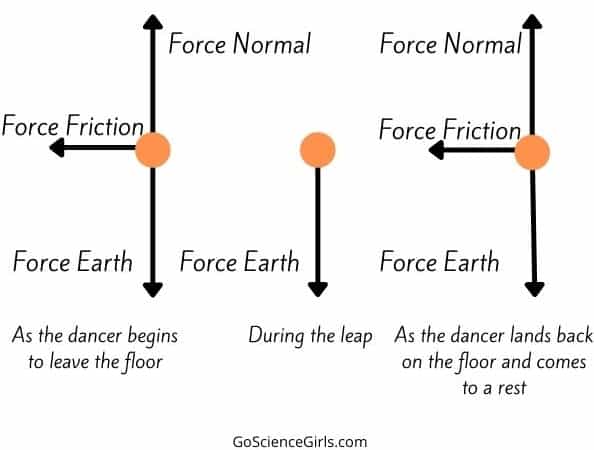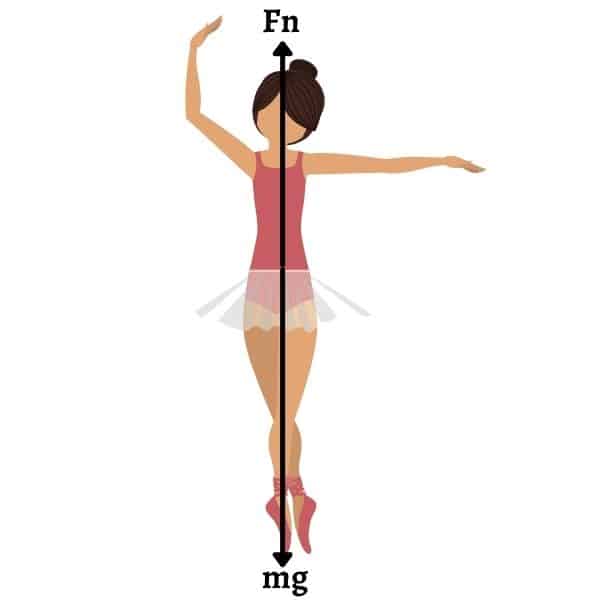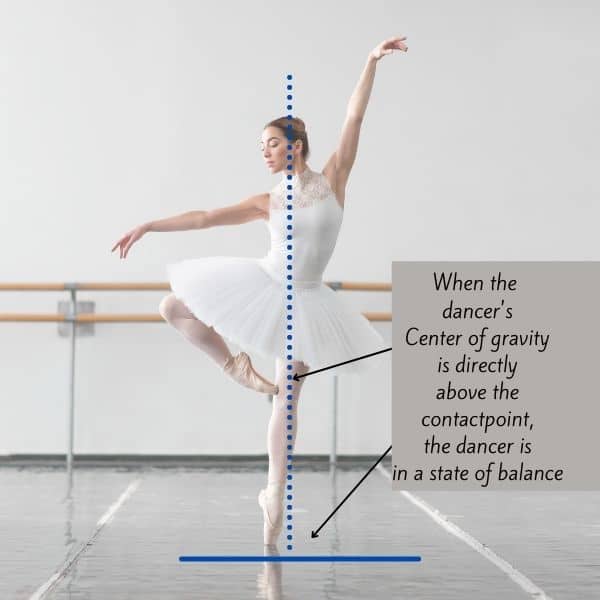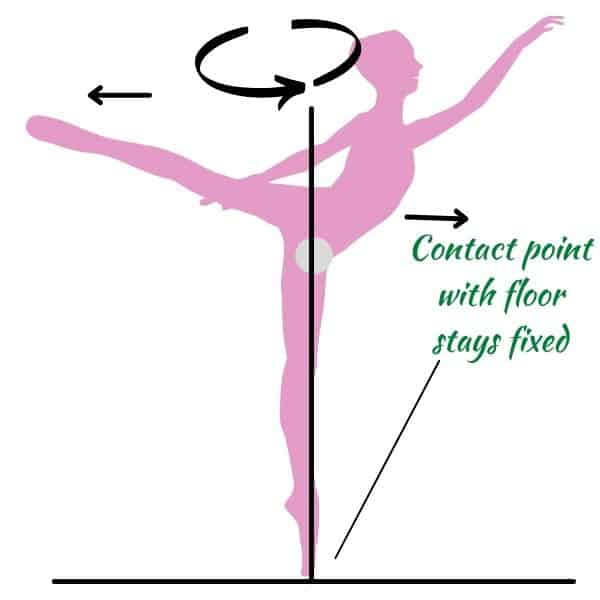Dance Science is a field of research that aims to investigate dance extensively. From how lack of training can affect the health of dancers in this area to preventing injuries, this science has provided some surprising findings.
Researchers have looked at how to make dancers safer by finding better ways to spot heart problems before they become severe, and even looking at what happens when you get hurt on stage.
Furthermore, the Science of Dance explores the human body’s reaction to movement as it changes in space and time, the fundamental building blocks of any type of dance.
It focuses on developing fitness and personal abilities through incorporating studies of both the anatomy of the body and movement patterns.
This scientific knowledge facilitates understanding and knowledge of body movement while increasing athletic performance through the intricate balancing and acrobatics required to master specific movement patterns.
Physics Concepts Behind Dance
The study of physics—mainly classical physics—is integral to a well-rounded education. However, we rarely associate it with any kind of dance. Contrary to popular belief, classical mechanics can describe the movement and bodies of a dancer.
The laws of physics, however, just like any other physical object in the universe, may describe the movements of a dancer.
1. Newton’s First Law of Motion
Newton’s first law of motion states: “Any object will remain at rest or in uniform motion in a straight line unless compelled to change its state by the action of an external force.” When a dancer leaps, the center-of-gravity must is initially raised off the ground, and there needs to be a force acting on it.
This is because of a property known as inertia; all objects resist a change in their state of motion.
There are three forces acting on a dancer while he or she is in the air. There is the force of gravity, there is the force of friction, and there is the force of inertia.
These three forces cause the dancer to accelerate once he or she leaves the ground. There is a force that the dancers’ body applies on the ground that pushes them into the air (normal force).
The other force is one between the dancers and the earth (gravitational force), which pulls them down.
Although the dancer is breaking inertia with a kick or other movement, inertia is able to break the dancer back down to the floor again.
This shows that once all the forces of dance are working together to keep the dancer airborne, and these forces must combine to take the dancer back down as well.

2. Newton’s Second Law of Motion
Newton’s Second Law of Motion states: “The rate of change of momentum of an object is directly proportional to the force applied.” Many forces act on a dancer, and every force has a direction and magnitude.
However, what most people never notice is that these opposing forces have to be balanced in order for a dancer not to fall over.
The normal has to act upwards in order to balance how gravity pulls the dancer downwards.
Now that we know that gravitational force, normal force, and friction act upon the dancer, we need to know-how? Let’s observe.
Experiment: A skydiver fell from the airplane and will have no initial velocity. When the skydiver jumps off the plane, they will not have any acceleration towards the ground.
Now when the skydiver is in mid-air, gravity is pulling them towards the land which pulls them. While these downward forces are trying to accelerate the skydiver toward the ground, upward forces such as air resistance prevent this and slow down the skydiver.
Dancing takes place on a similar principle. All the forces are stable, and the dancer stays upright, through the concept of balanced force physics-how the net force on a body must be zero in order to stand still.
So, an essential requirement of dancing is to balance the various forces acting on the body- including gravity and friction.
Gravitational force makes things fall. It acts upon all objects; no matter if they are on earth, gravity will continue to act as it does. So, how is it equalized?
The normal force is a support force that is compared to the weight of an object. The normal force supports objects and keeps them upright. In dance, we use the same concept when we are resting in a plie position.
As gravity is pulling us down into the earth, our hips would naturally like to collapse inward upon the supporting muscles of our body.
However, if we place our mind into the normal force of our leg support, then this upward force will support and hold our hips open as we sink down.
Thus, gravity is opposed, and the dancer stays upright.

3. Newton’s Third Law of Motion
Newton’s third law of motion states that “for every action, there is an equal and opposite reaction.” This means you generate a force on the pointe shoe when you push against the ground; ballerinas call this pushing off.
The ground pushes back up at the dancer at the same speed and with the same strength, creating the force for pointe shoes to work.
But this can only happen in a balanced manner if the centre of gravity is aligned with the point of contact.

If the center of gravity were not aligned, then the forces would not be equal, which creates a state of unbalance.
The dancer would topple over. This also explains why dancers spin around the same rotational axis. If they didn’t, the center of gravity would move.
Maintaining balance is a combination of skill and experience. Dancers must anticipate, calculate and respond quickly to situations they encounter in order to keep their center of gravity and rotation stable.

The Science Behind The Effects of Dancing
Research overwhelmingly shows that dancing physical and mental conditions such as social isolation, stress, depression, anxiety, schizophrenia, ADHD, and Alzheimer’s.
This is because it improves the frame of mind and even some cognitive skills. Scientists have also found that taking a class in ballroom dancing can improve cognitive function in healthy seniors and in older adults with mild impairment.
Dancing can be physically exhausting, and after dancing you should be ready to relax. The heightened endorphins help lengthen your attention span and make you more receptive to positive stimuli, on stage and off.
Happy thoughts make for a happy mood. It reduces stress and stimulates the release of serotonin, the feel-good hormone.
It also helps in neuroscience, including developing new neural connections, enabling long-term memory, and improving spatial recognition. All in all, it’s extremely good for health.
How A Dancer Controls Dizziness
The brain of a dancer rewires itself after constant training. Dancers are less likely to feel dizzy because they have fewer neurons sending signals to a cerebral cortex area responsible for the perception of dizziness.
Although an advantage for dancers, this adaptability can lead to greater feelings of dizziness when people give up dancing.
Their brains no longer receive the same input that made them adapted to suppress the response. They experience symptoms of perceiving motion as they would if they had never been dancers.
Dance Science Degrees
After completing a Bachelor’s degree in dance science at CSULB, students will be able to integrate the concepts of leading scientists and researchers within neuroscience, biomechanics, and psychology that guide their exploration of both fundamental and chronicle questions in the advancement of the self.
The major objective is to conduct research based on primary data that establish formulas for movement patterns.
The Dance Science major integrates coursework in dance and human performance with scientific disciplines so that students can connect with other majors on campus.
There are several levels of education in Dance Science. These include- Undergraduate, Post Graduate, and Ph.D.
A lot of universities in the United States offer a variety of courses as well. These degrees can go on to offer lifelong careers.
Dance Science Careers
Dance degrees are an excellent way to gain a firm grounding in a wide range of practical performance skills and conceptual dance techniques alongside social sciences and humanities.
They combine practice, theory, and aesthetics, making it the perfect bridge between the dance industry and academia.
They open the doors for a plethora of careers, including the following. Remember, this is only a small sample of the careers you can pursue with a degree in dance science.
1. Dance Movement Psychotherapist
Dance Movement Psychotherapy is a holistic and integrated approach to treatment that takes the whole person and the whole of his or her experience into account.
It sees the body as a means of expressing experiences, exploring issues, and finding solutions. It provides an opportunity to experiment with new possibilities for resolving difficulties, to find out what works best in different situations.
2. Dance Administrator
Dance administrators may work for independent dance studio owners, large corporations, or government organizations.
Regardless of their specific position, all dance administrators have similar responsibilities regarding bookkeeping, human resources, and business operations.
Dance administrators are also responsible for handling personnel problems ranging from employee relations to resolving performance issues within the dance company.
3. Choreographer
There are many roles in the entertainment industry that require choreography. A choreographer and the dancers they work with are responsible for several different types of performances, including features in films and television, live shows at theatres, and music videos.
In order to break into this career, you’ll usually need a degree in dance or movement arts, often combined with a related subject like a business.
Dance-Related Science Fair Projects
Science fair projects don’t have to be limited to only those that can easily explain through numbers and data. Sometimes, science fair projects are most intriguing when scientific theories are best demonstrated with visual aids.
For example, dance-related science fair projects are a unique way to combine science with the art of dance. Students can easily demonstrate their hypotheses and find solutions to a lot of questions through the following experiments:
1. Demonstrating Health Benefits
This experiment would involve taking a group of people of various ages who do not dance and get them to go to beginner dance classes.
At the start and end of six months, perform the same physical tests on both groups. This will reveal whether there are any health benefits from taking up dance lessons. These strength tests may include:
- Flexibility- How far can they split
- Muscular Endurance- How long they can hold a plank
- Cardiovascular Endurance- How far can they run on a treadmill
2. Demonstrating Emotional Effects
Compile a series of videos of varying types of dances with different music. Play all the videos for a wide range of people and record the change in emotions.
Notice if the emotion has anything related to the dance and music. For example, if it’s a nostalgic, soulful song- what mood does it cause? If it’s an upbeat pop sound with breakdancing, how do they react?
List your observations and present them at the fair. If possible, do this with the judges as well! It’s an interesting spin to a science project.
3. Demonstrating Varying Effects of Dizziness
Put a group of dancers and non-dancers on a rolling chair and tell them to pull a lever when they are feeling dizzy.
Dancers and non-dancers alike reported feeling dizzy after about 7 seconds of spinning. But dancers took an average of six seconds longer to pull the lever than non-dancers.
The results suggest that everyone’s sensory cues are based on the same unconscious system for telling them when their bodies are spinning at a dangerous speed.
But in dancers, this system is strengthened by daily practice, making them more aware of how to balance on one foot and hold their arms above their shoulders without getting sick.
The biggest difference between dancers and non-dancers is that dancers will pull the lever about one second earlier.
They know when they are feeling unstable a lot sooner than non-dancers do. And the reason for that is that they have very strong proprioceptive awareness.
Proprioception is your sense of your body in space, knowing where your limbs are and how they relate to each other, and having a sense of balance.
So, they will not feel dizzy after they finish spinning. Note down your observations and present them at the fair.
How Is Science Used In Dance?
Science has always been an integral part of dance, with physics and anatomy class being an essential part of training at many schools.
Science is also used in dance in a more specific way to improve performance and reduce injury risk. The practice of dance science came about after the traditional method of fixing dancers’ problems individually proved inadequate. It simplifies the lives in many fields, such as:
1. Health and Performance
The physical health of a dancer is one important aspect that can seriously affect their ability to perform well.
These fitness routines are why many dancers have a strict diet that includes eating right and exercising daily.
They are also required to keep up with annual physicals just like any other athlete. This study of science is responsible for developing fitness routines for dancers that will keep them in the best possible physical and mental condition for dancing.
This understanding of the fitness required to be a performer is essential. Scientists realized that dance provides an excellent way to stay fit, but it is not enough to keep healthy. Various workout programs can help you enjoy dancing more while maintaining an outstanding fitness level.
Science has a straightforward answer for how one can use dance, exercise, and physical therapy together to improve the fitness level of students.
Three general types of classes are commonly available in gyms and health clubs: cardio-focused dance classes, aerobics classes, and flexibility/muscular endurance classes.
Each of these kinds of styles builds a different type of fitness. Hip hop dance classes are combined with other workouts that challenge posture and endurance, such as breathing exercises and strength training. These help in endurance, a longer career, and speedy recoveries with injuries.
2. Choreography
What is the science of choreography? It’s a complicated question because perfection in dance is hard to define. However, each dance move is broken down into minute components, and dancers scientifically analyze each part.
Understanding the scientific aspects of dance allows them to evaluate and improve their own choreography, which is crucial as it denotes the plot and structure of dance routines.
To a scientist, perfection isn’t a visible quality. It is measurable through mathematical and statistical processes. Dance has something similar, which is called “perfect score.” Science is utilized in various dance genres, from contemporary to hip hop.
Modern ballet, for example, incorporates a lot of biomechanical principles and physiological principles, such as understanding the anatomy of the body and how the structure interacts with force to create motion.
Principles of physics and human physiology are used to improve the body’s efficiency and control. Mechanics help dancers proportion their weight to not overwork limbs, particularly hands and wrists.
Science is used to minimize frictional forces, leading to injuries such as pulled muscles, torn ligaments, and even joint damage.
In ballet, dancing a perfect pointe shoe means having one’s heel on the floor, and all toes pointed. A perfect pirouette is where the dancer does not lose her balance and keeps her feet in line with her hips, shoulders, and head while turning on one foot.
The excellent turnout shows that every leg muscle has been used to achieve the outside position of the foot joints in a turned-out position. Leg muscles aren’t allowed to make an effort during this movement. Every one of these moves has its base in science.
3. Mind-Body Relationship
It is vital for dancers to understand the relationships between their minds and their bodies as they must be able to control their bodies and allow them to put a soul in routines.
Investigating this is important, as we can see the human body as a complex machine, and dance requires very complicated manoeuvres which allow dancers to communicate with their bodies.
Due to this intimate relationship between mind and body, dancers are in a unique position to test the connection between the two, and how it plays a role in their performance.
Additionally, dance is gradually becoming especially important for the field of neuroscience. Researchers learn that dance, and the creative arts in general offer insight into disorders such as Parkinson’s disease and other movement disorders, and even mental disorders like depression.
Scientists study the mind-body relationship to better understand the link between thoughts, emotions, and the brain, focusing on how the brain reacts to and starts movement during dancing.
Dancers can quickly provide insights into how thought processes and movement because of the creative component involved in their performances.
The study of dance can reveal how spontaneous responses differ from movements (i.e., routines) that are practised or memorized. This has a basis in neuroscience.
The Conclusion
Dance is considered to be part of the arts, but it is interesting to realize that there is a large amount of science in dance.
Dance Science investigates it extensively. This area of study is an emerging, multi-disciplinary field that seeks to understand, not just the physical and aesthetic aspects of dance, but also the cognitive, emotional, social and spiritual reactions we have to movement and music.
From this viewpoint, dance is seen as a deeply-rooted human behaviour, and has an amazing impact on life.
